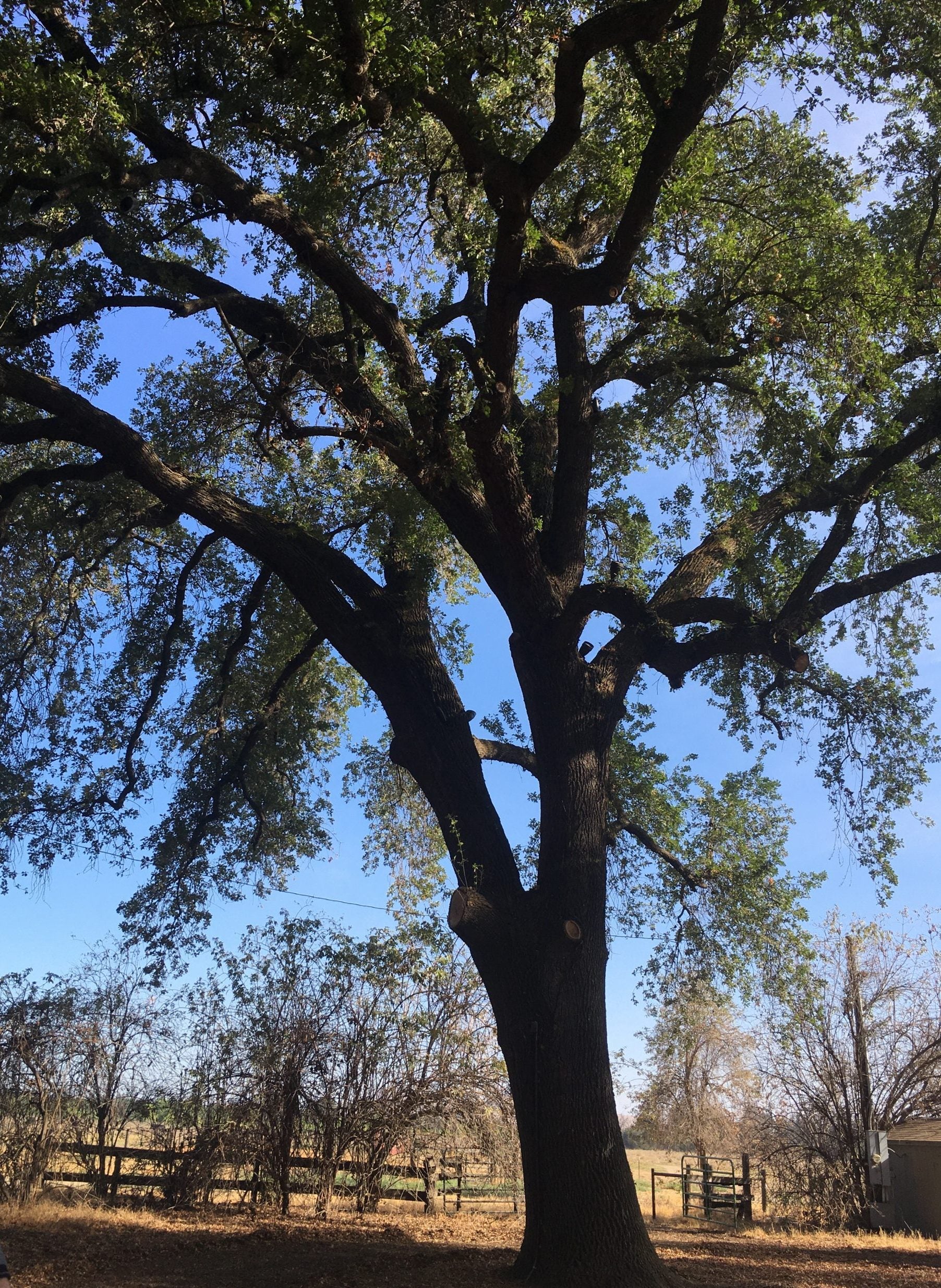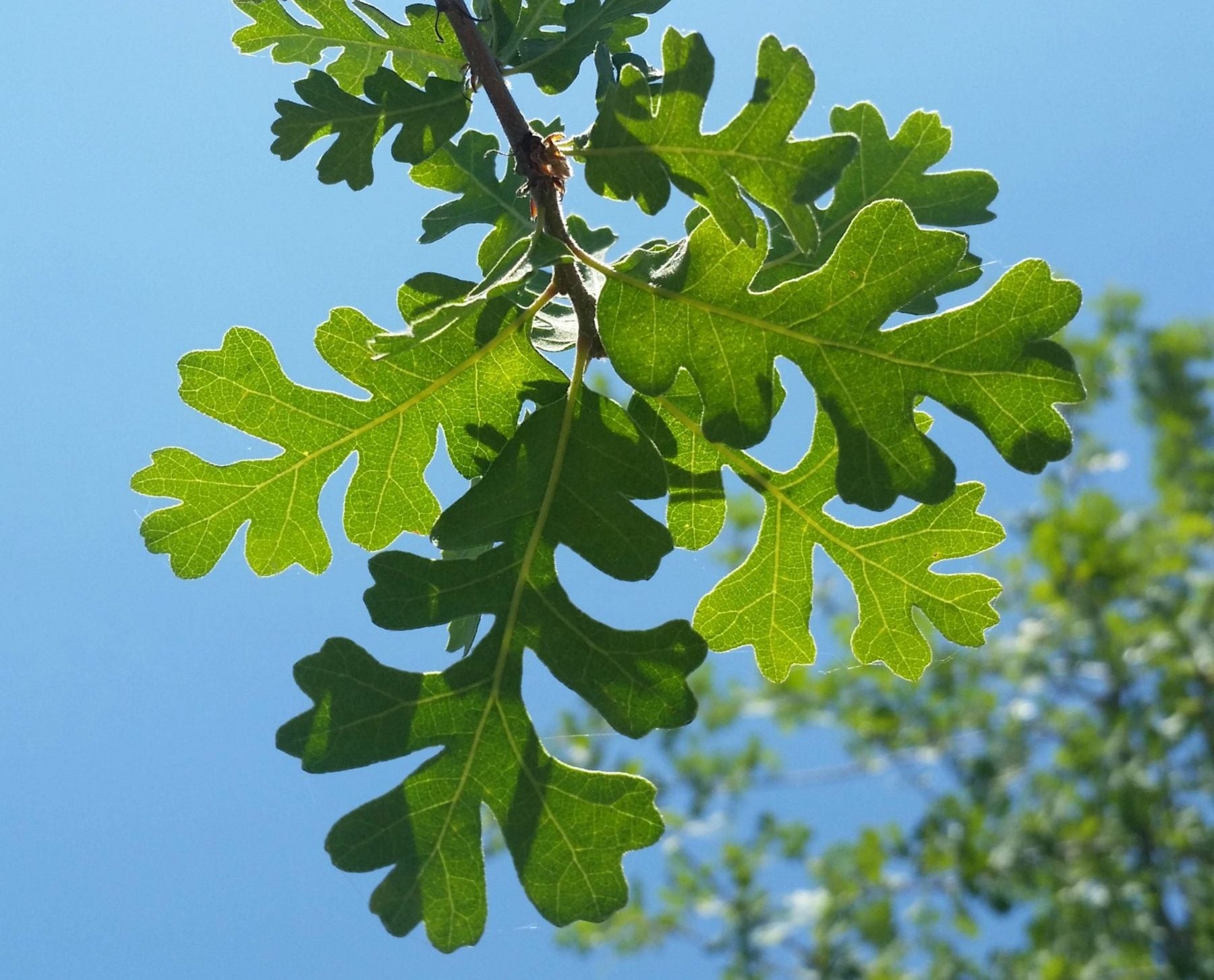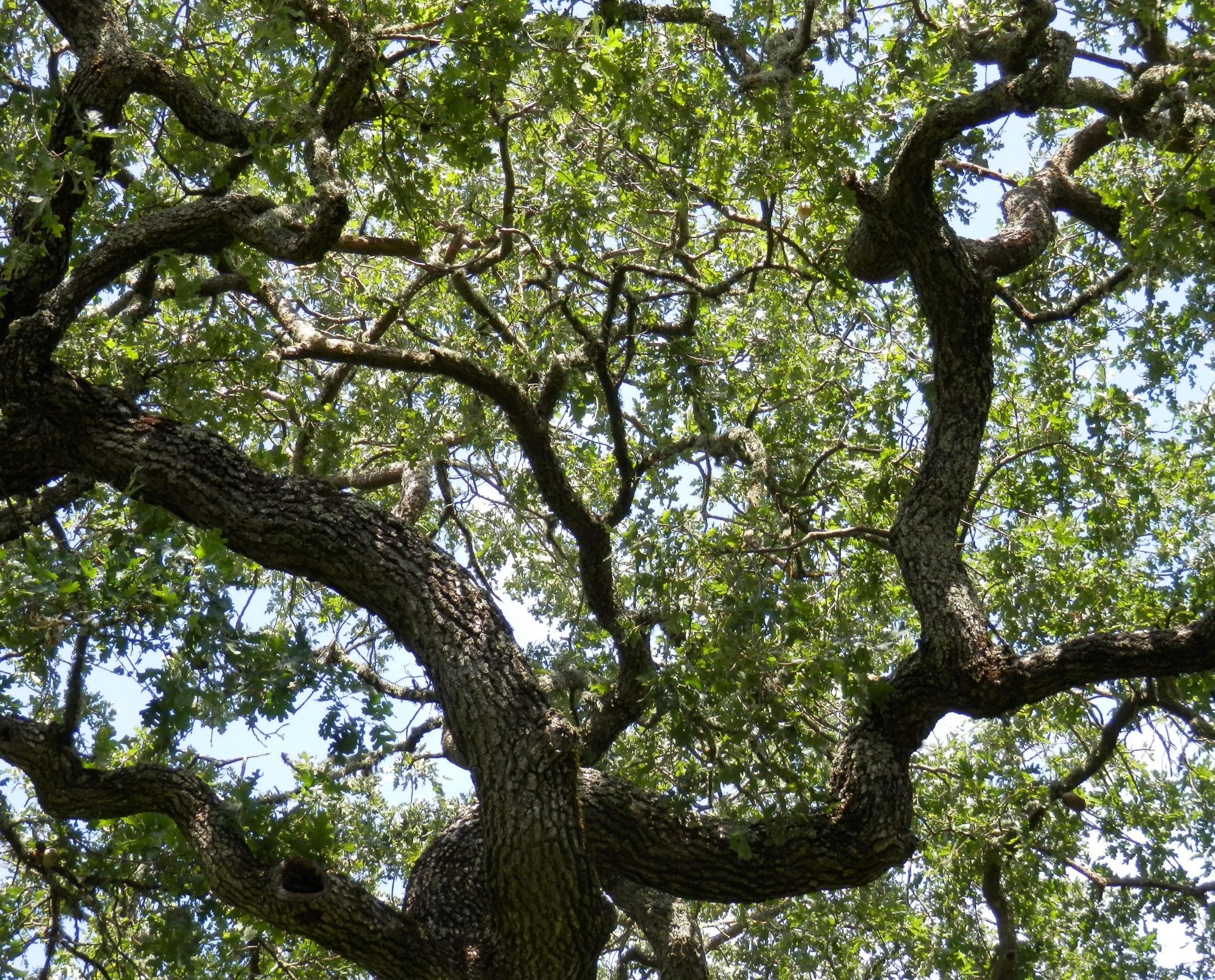
General Information: Possibly the largest oaks in North America, valley oaks can grow up to 75 feet tall. This towering tree is only found in California. Wildlife relies on valley oaks for habitat, both for nesting habitat and for foraging – valley oak acorns are an important component of many animal’s diets. Valley oak is culturally significant for many Indigenous communities in California, including the tribes comprising the Ohlone. The Ohlone, and other communities, would rely on valley oak for food, clothing dye, and more.
Category: Focal species
Surface Water Needs: None, once established
Federal Listing Status: None
State Listing Status: None
Potential Conservation Actions:
- Create grazing plans
- Plant native vegetation
Fun Fact
The roots of valley oaks can be as deep as 80 feet.
Habitat
Individual valley oaks grow in valley and foothill grasslands and riparian areas, and clusters of valley oaks create the unique oak woodland environment.

Grasslands

Riparian areas

Oak woodlands
Disturbance and Stressors
Agricultural development, overgrazing, competition with weeds and invasive plants, drought and groundwater depletion, and warming temperatures all threaten valley oaks.

Agriculture

Overgrazing

Invasive species

Habitat fragmentation


Sources: Cal Poly State University; biodiversityla.org; US Department of Agriculture-Natural Resources Conservation Service
Photo credits: Molly Daniels, Mid-Valley Trees, University of California Agriculture and Natural Resources